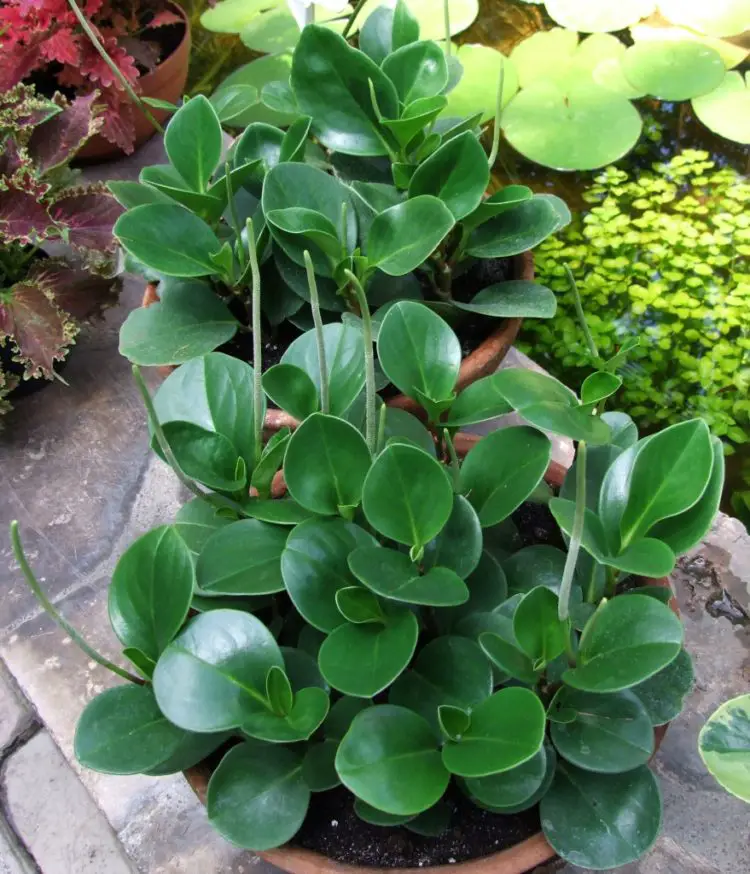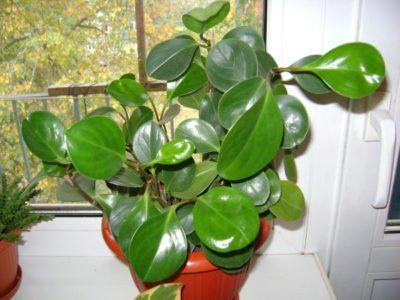The native land of Peperomia Magnoliifolia is the tropical regions of Central and South America. In our area, it can only be found on the windowsill.
Peperomia magnoliifolia is an ornamental crop with interesting leaves. Despite the whimsical care, the plant is a rare guest in the house and apartment.

And in vain, since the flower is very useful and will compete with other indoor crops.
peperomia magnoliifolia Habitat and Botanical Photo description
Peperomia magnoliifolia belongs to the Pepper family. The homeland of the flower is the rainforests of South America and Brazil.
It is a perennial plant, the height of which is 25-30 cm. The stems are fleshy, covered with short petiolate leaves, which have a round oval shape. The diameter of the leaf is 5 cm, the surface is shiny and smooth. The color can be light or dark green.

peperomia magnoliifolia care
Watering
The leaves and stems of the plant are capable of accumulating a large amount of moisture, so drought is not terrible for him. Most often, problems arise due to severe waterlogging. Violation of the recommendations for care leads to rotting of the stems and root system.
For irrigation, purified and settled water is suitable, the temperature of which should be room temperature. In the summer, water the plant as the soil dries. In winter, moisturize once a week.
Placement selection
For growing plants, use windows facing west or east. Magnoliifolia peperomia grown on a south window requires a claim. In the daytime, when there is intense sunlight, it is necessary to close the windows with roller shutters or curtains.
Attention! In summer, it is not recommended to take the plant out to the veranda or balcony.
Lighting
peperomia magnoliifolia has a positive attitude towards bright lighting. But the flower must be protected from direct sunlight, otherwise, it is fraught with the appearance of dangerous burns.
In winter, to preserve the decorative appearance, it is necessary to provide the plant with additional lighting using fluorescent lamps. Daylight hours should be 16 hours.
Temperature regime
magnoliifolia peperomia in summer and spring should grow at a temperature of +22 – +24 ° C.
In winter, temperatures can drop to +19 ° C. If the temperature drops to 15 ° C, then the plant may die.
For flower growth, it is important to monitor the temperature of the soil. It should not be lower than +17 ° C.
Avoid sudden changes in temperature, drafts and strong gusts of wind.
Humidity
The plant will thrive at 30% humidity. But the optimal indicator is 60%. To increase the humidity characteristics, you can use the water spray method or put a container of water near the pot.
Potting soil Mix
For the cultivation of magnolia-leaved peperomia, it is necessary to prepare a loose and fertile bud with a neutral or slightly acidic pH. In the case of self-preparation of the substrate, you need to mix the following components in equal proportions:
- sheet soil;
- humus;
- peat soil;
- sand.
Pot
Peperomia should grow in a shallow container since its root system is not too developed. The pot can be made of plastic or ceramic.
Transplantation It is necessary to replace the soil and capacity every year for plants up to 3 years old. Adult crops are transplanted by the transshipment method at the beginning of March (every 3 years).
You can determine the need for a transplant by several criteria:
- the development of the plant stops, while there are no symptoms of damage or disease;
- the root system has grown through the drainage holes;
- strong compaction of the soil of the mixture in the container, which negatively affects the condition of the plant.
The transplant process is as follows:
- Fill a new pot 1/3 full with expanded clay or crushed foam. In order to disinfect, add a little wood ash.
- Top up with the prepared soil composition, but the layer thickness should not be more than 2 cm. Pour water and wait for it to be absorbed.
- Remove the plant from the container. In order not to injure the root system, the earthen lump must remain intact.
- Place the peperomia in a new container, cover the remaining space with earth and carefully level. The ground level should be 1.5 cm below the edge of the container.
- Moisten the ground and place the plant in a warm room with diffused sunlight.
- After 2 weeks, the flower can be transferred to a permanent growing site.
Pruning
It must be carried out periodically for the correct formation of the flower, and the removed parts can be used for reproduction.
Procedure:
- Disinfect the scissors or knife used in the trimming process.
- Shorten the stems by 10 cm, and treat the cuts with crushed activated carbon.
- To increase branching, the tops of young shoots must be pinched.
Fertilizer
For magnolia-leaved peperomia, complex compositions are used in liquid form. You can buy them in a specialized store. To process the plant, fertilizers will have to be used in a dosage that is 2 times less than that indicated in the instructions.
Wintering
With the onset of winter, the plant begins a dormant period. At this time, the flower should not be kept on a cold windowsill, otherwise, it will stop developing. It is not necessary to make additional fertilizing, but it is necessary to provide 16-hour lighting and watering once a week.
peperomia magnoliifolia propagation
Division
Perform when transplanting a plant.
Procedure:
- Divide the bush into 2 parts, carefully untangling the roots.
- Treat each part with charcoal powder in order to disinfect and plant in a new pot.
- After planting, the bush cannot be watered for 7 days.
Cuttings
Procedure:
- Select blanks that contain 2-3 nodules cut from the apical shoots.
- For rooting, use a mixture of sand and turf.
- Plant the cutting to a depth of 3-4 cm, and then cover with polyethylene to create greenhouse conditions.
- Keep the plant in a room with a temperature of 24-25 degrees.
Seeds
Procedure:
- Prepare a flat container, fill it with a mixture of sand and soil.
- Bury the seeds to a depth of 1-2 cm, moisten and cover with glass.
- Place the container in a room with good lighting, but no direct sunlight.
- As soon as 2-3 true leaves are formed, plant the plants in small pots (7-8 cm).
peperomia magnoliifolia Bloom
Peperomia blooms unattractively. She has small inflorescences that resemble plantain spikelets. This period lasts from the second half of spring to the end of summer.
peperomia magnoliifolia Diseases and pests
All diseases of this decorative culture are associated with improper care. As a result, the following problems arise:
- Blackening of the leaf plate. The reason is a sharp drop in temperature.
- Dropping leaves. The reason is a lack of moisture.
- Lethargy leaves. Arises from rotting of the root system or fungal infection with excessive moisture.
- Shriveled leaves. Occurs when sunlight hits the sheet plate.
The plant can be affected by the following pests:
- mealybug;
- shield;
- spider mite;
- thrips.
For prophylaxis, it is necessary to regularly rinse the flower under a warm shower, and in case of infection, treat it with chemicals of a suitable action.
peperomia magnoliifolia Similar Plants
The following plants are similar to magnolia peperomia:
- Ficus. It has a well-branched root system, dense leaves of bright green color.
- Boxwood. This is a shrub whose height is 2-12 m. Leaves are similar to peperomia, which have a dark green color and a glossy surface.
- Jade tree. It features interesting twisted branches and fleshy leaves.
- Anthurium. It is a glossy flower that resembles an artificial plastic plant in its color and appearance.
- Pisonia is umbrella. The leaves are large, opposite, dark green in color. Their length is 25 cm, width is 10 cm.
Magnolia-leaved peperomia is an interesting plant that is appreciated by flower growers due to its foliage. It has a glossy surface, and spots, stripes of light or dark green color can be scattered over its surface. The ease of caring for the crop allows even a beginner to grow it.
